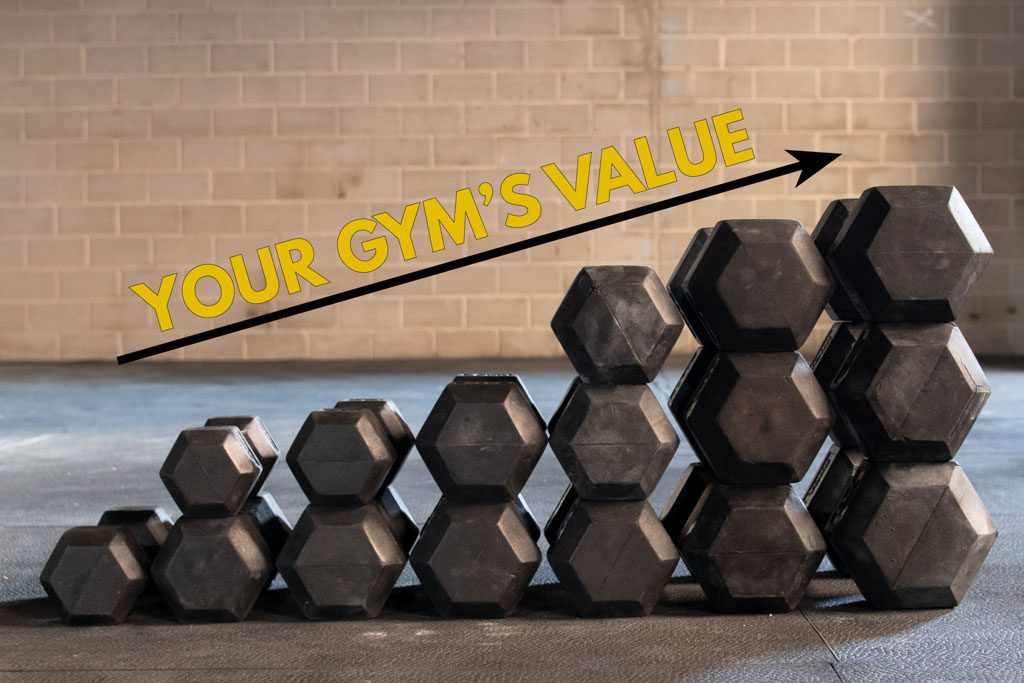I often hear this: “I’m burned out and broke. I’m ready to give up and sell my gym!”
But nobody wants to buy a business that’s going to make them burned out and broke, too.
So I usually respond, “Let’s take six months and make the business more valuable to a potential buyer. How does that sound?”
Usually, the owner says, “That sounds good. I can stick it out for another six months if I know the end is in sight.”
Then we build the things that make the gym valuable.
7 Steps to a More Valuable Gym
1. We write down everything it takes to run the gym, and we get the systems and processes out of the owner’s head.
2. We teach everything to the staff members so they can run the gym when the owner’s gone.
3. We set up long-term retention systems to keep clients around so their lifetime value is more appealing to the buyer.
4. We build a Career Roadmap for each person on staff so the gym can keep its best people around for the new owner.
5. We systemize the marketing so the current owner can predictably say, “We get five new clients per month.”
6. We track metrics we can leverage to show the business is growing.
7. We mentor the owner through the tough transitions that must happen before anyone will buy the gym.
And then, almost every single time, something amazing happens: The gym owner says, “Coop, I love my business now. I don’t even want to sell it anymore!”
This is because the actions that make your business easier to sell also make it easier to keep.
This same process works for people who want to borrow money to open a second location: If they wait six months and follow the plan outlined above, they’ll have a much more valuable first location that runs itself.
A Strong Business Gives You More Options
I want you to build a business you’re proud to own.
That means you’re serving a noble purpose, you have caring staff dedicated to service, you have clients who aren’t a constant hassle, and the future is bright and predictable.
Almost nobody wants to sell that business, right?
On some rare occasions, the owner should sell—and I’ll talk about those reasons in the next post in this series.
But for now, here’s my advice: If you’re burned out and broke and you think “I can’t take much more of this,” you’re actually in a good position.
You’ve probably learned some hard lessons—your clients are not your friends, for example. Your experience allows you to get some emotional distance and do hard, necessary things without putting everyone else first.
In my case, it went like this: After years of keeping my prices lower than anyone else’s, I raised everything at once.
“Well, my back’s to the wall here. If this doesn’t work, I’m gone anyway. I might lose a few clients, but if I close, I’ll probably never see them again anyway. What have I got to lose?” I said.
So I did the hard thing. But if everything had been going well—or even just OK—I probably wouldn’t have had the resolve to raise rates. And I have 100 other examples of reality forcing me to do things I should have done earlier—like getting staff members to follow the rules.
There’s really something to be said for reaching a point where your only option is to take clear action.
To sum up:
If you’re ready to give up, take six months and make your business more valuable. Then sell it.
If you’re thinking about opening a second location or borrowing money for some other reason, ask yourself “Can I wait six months?” Then book a call with our team, build a more valuable gym and dramatically increase your potential. Duplicate a great gym instead of buying yourself a second job.
In the next post in this series, I’ll answer this question: “When should you sell?”
Other Media in This Series
“What’s Your Gym Worth (and Can You Increase That Number)?”
“When to Sell Your Gym”

